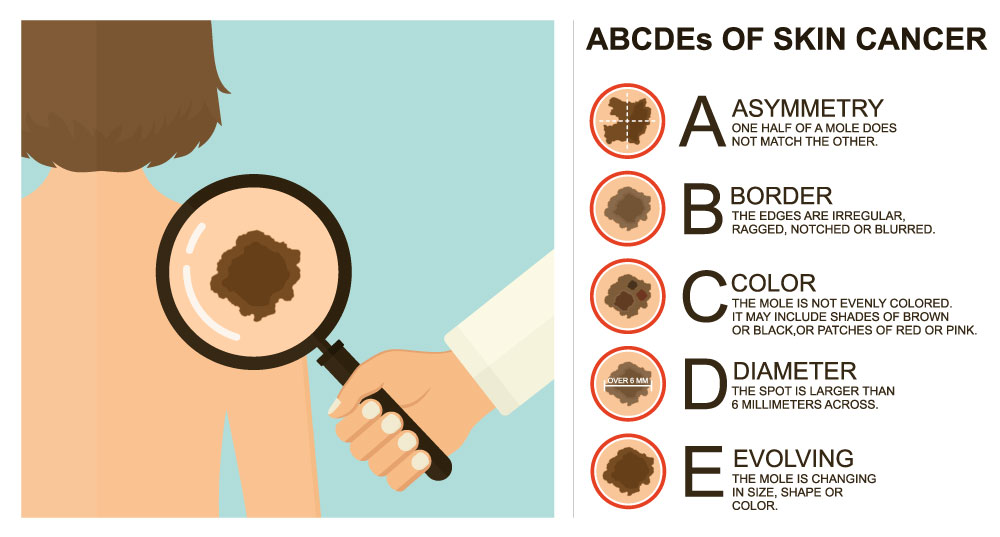MELANOMA
Melanoma is the deadliest form of skin cancer. It is most often caused by intense, intermittent exposures to the sun especially exposures that occur before age 18. In the past two decades, as outdoor recreational activities have increased and fashions have left more skin exposed, melanoma incidence rates have more than tripled.
Fair-skinned people with light hair and eye color, and those who have had sunburns or tend to burn easily, are at an increased risk of developing melanoma. So are those who have a family history of the disease or have ever had a melanoma or other skin cancer. People with large, unusually colored, and irregularly shaped moles (dysplastic nevi, also called atypical moles) are also at higher risk.
In its earliest stages, melanoma is readily treatable. Left untreated, it will spread to vital organs, frequently becoming life-threatening.
How to Spot a Melanoma
Most people have some brownish spots or growths. Almost all of these are normal, but growths that change noticeably in size or have irregularities in shape and color could be melanomas. It is important to check the skin from head to toe every month, staying alert for lesions that have the “ABCD” signs of melanoma: Asymmetry, Border irregularity, Color variability, Diameter larger than a pencil eraser and E for evolving
- Asymmetry – Most melanomas are asymmetrical: A line through the middle would not create matching halves. Common moles are round and symmetrical.
- Border Irregularity – The borders of early melanomas are often uneven and may have scalloped or notched edges. Common moles have smoother, more even borders.
- Color Variability – Varied shades of brown, tan, or black are often the first sign of melanoma. As melanomas progress, the colors red, white, and blue may appear. Common moles usually are a single shade of brown.
- Diameter – Early melanomas tend to grow larger than common moles; generally to at least the size of a pencil eraser (about 6mm, or ¼ inch, in diameter).
- Evolving – Spots that are changing in size, shape, and/or color (or behaving differently than your other moles) may be a warning sign.

If you wish to see more about Melanoma, please click this link. You’ll be taken to the American Academy of Dermatology Association. Link to AAD
